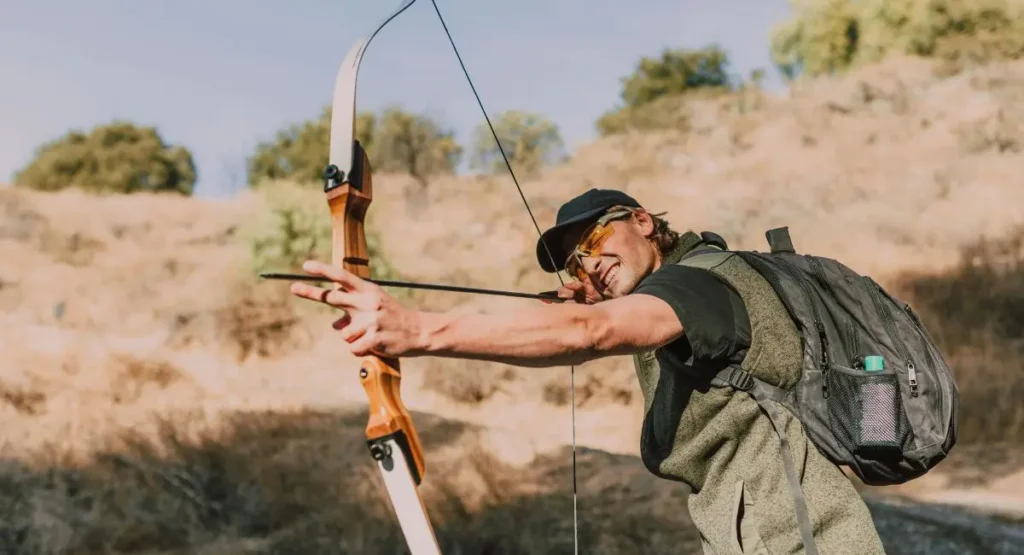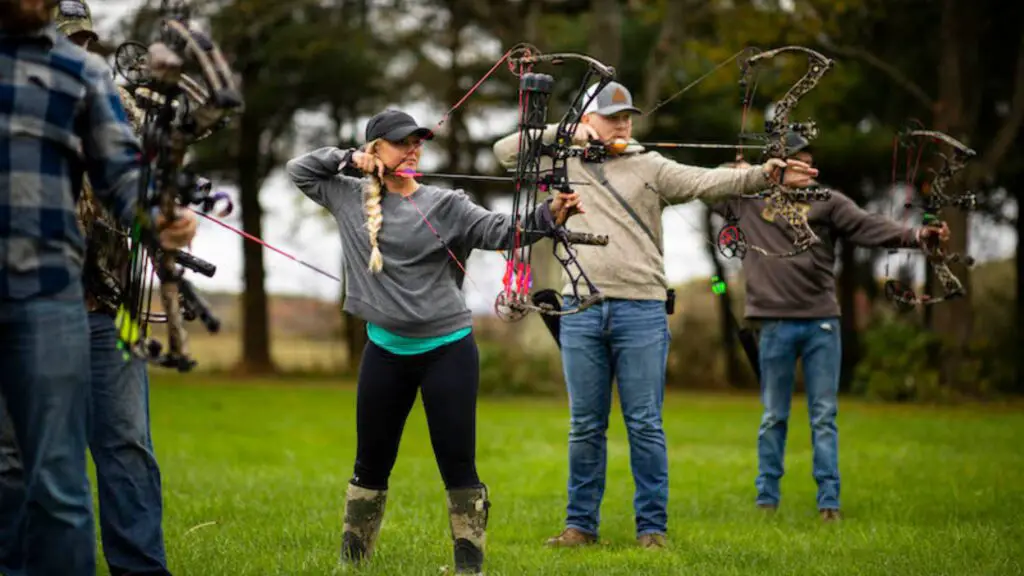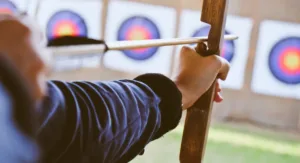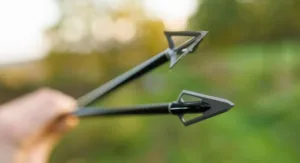Introduction
Traditional archery is more than just a sport; it’s an art form that bridges history, culture, and personal skill. In a world where modern technology dominates most activities, traditional archery lies in its simplicity and connection to the past. This guide aims to immerse you in the world of traditional archery, providing tips, techniques, and insights to help you master this timeless practice. Whether you’re an archery enthusiast, an outdoor hobbyist, or a historical recreationist, this guide covers everything you need to know to excel in traditional archery.
Understanding Traditional Archery
Historical Context
Traditional archery has been practiced for thousands of years, traced back to ancient civilizations. From Mongolian warriors who used recurve bows on horseback to Native American tribes with longbows, archery has played a crucial role in warfare, hunting, and cultural ceremonies. Understanding the historical context of traditional archery enriches your appreciation and provides a deeper connection to the sport.
Cultural Insights
Different cultures have unique archery traditions and techniques. For example, Japanese Kyudo emphasizes the spiritual and meditative aspects of archery, while English longbowmen are renowned for their battlefield prowess. Exploring these cultural insights can inspire you to incorporate various elements into your archery practice, making it a more fulfilling and enriching experience.
Choosing The Right Equipment
Types Of Traditional Bows
Traditional archery requires the right bow. Traditional bows are divided into recurves, longbows, and self-bows.
- Recurves: Known for their distinctive curved tips, recurve bows store more energy and provide faster shots. They are ideal for both beginners and experienced archers.
- Longbows: Characterized by their simple, straight design, longbows offer a smooth draw and are known for their accuracy. They require more skill to master but offer rewarding experiences.
- Self-bows: Made from a single piece of wood, self-bows are the most traditional and require meticulous craftsmanship. They are appropriate for those who appreciate bow making art.
Selecting Arrows
Choosing the right arrows is just as significant as selecting the right bow. Consider the material, length, and fletching when choosing.
- Material: Traditional arrows are typically made from wood, but modern materials like aluminum and carbon are also available.
- Length: The arrow length should match your draw length for optimal performance.
- Fletching: The feathers or vanes on the arrow stabilize it during flight. Traditional arrows usually have natural feather fletching.
Equipment Setup And Maintenance
Proper setup and maintenance of your equipment is essential for peak performance. Regularly inspect your bow for wear and tear, and keep your bowstring waxed to prevent fraying. Store your equipment in a cool, dry place to ensure longevity.
Mastering Basic And Advanced Techniques
Proper Form And Stance
Archery is based on proper form and stance. Stand with your feet shoulder-width apart, perpendicular to the target. Keep your back straight, shoulders relaxed, and draw the bowstring back to the anchor point on your face. Consistent form and posture are key to accuracy.
Shooting Techniques
Mastering shooting techniques can significantly improve accuracy. Focus on your grip, draw, and release. Practice drawing the bowstring smoothly and releasing it controlled. Advanced techniques, such as instinctive shooting, allow you to shoot without aiming, relying instead on muscle memory and intuition.
Common Mistakes And How To Avoid Them
Even experienced archers make mistakes. Common errors include gripping the bow too tightly, inconsistent anchor points, and improper follow-through. To avoid these mistakes, practice regularly, seek feedback from experienced archers, and always strive for consistency in your technique.
Hunting With Traditional Bows

Essential Skills
Hunting with a traditional bow requires unique skills. Tracking, stalking, and stealth are essential to hunting success. Learn to read animal tracks, move quietly through the terrain, and position yourself downwind to avoid detection.
Safety Measures
Safety should always be a priority when hunting. Wear appropriate gear, including a safety harness if hunting from a tree stand. Always identify your target and what lies beyond it before releasing your arrow. Communicate with your hunting partners and establish clear signals to ensure everyone’s safety.
Real Life Experiences
Hearing stories from seasoned hunters can provide valuable insights and inspiration. For example, many traditional archers recount the thrill of drawing close to their prey and making a clean, ethical shot. These real-life experiences highlight bowhunting challenges and rewards.
Mental And Physical Preparation
Focus And Discipline
Mental preparation is crucial in traditional archery. Techniques like visualization and meditation can improve your focus and discipline. Before each shot, visualize the arrow’s path and the target. Develop a pre-shot routine to calm your mind and maintain consistency.
Physical Fitness
Physical fitness plays a significant role in archery performance. Strengthening your core, back, and shoulder muscles can improve your draw and stability. Incorporate exercises such as planks, rows, and resistance band workouts into your routine.
Community And Resources
Archery Communities
Joining an archery community can be a fantastic way to enhance your skills while connecting with like-minded individuals. Local archery clubs often offer lessons, competitions, and social events that foster camaraderie among members. Online forums and social media groups also serve as valuable platforms for sharing tips, experiences, and advice. Consider participating in national organizations such as the National Archery Association (NAA) or Bowhunters of America, which provide resources, advocacy, and networking opportunities. Attending local, regional, and national tournaments can further immerse you in archery culture and help you build lasting friendships.
Additional Resources
To support your traditional archery journey, there are numerous resources available:
- Books & Guides: “The Traditional Bowyer’s Bible” series provides comprehensive insights into bow making and techniques.“Archery: The Woman’s Guide” by R. V. Hillyer offers tailored advice for female archers.
- Website: Archery 360 offers articles, videos, and tips for beginners and seasoned archers alike. Archery Talk is a popular forum where archers share questions, experiences, and advice.
- Online Courses: Websites like Udemy and Skillshare offer courses on archery fundamentals and advanced techniques, ideal for structured learning.
- YouTube Channels: Channels such as Nock On and The Push feature tutorials, equipment reviews, and interviews with experts in the field.
Engaging with these resources will not only improve your archery proficiency but also enrich your understanding and enjoyment of this ancient sport.
Expert Opinions And Interviews
Listening to seasoned professionals’ insights can help both novice and experienced archers. Here are some key expert opinions and excerpts from interviews with well-respected archery figures:
Archery Coaches
Archery coaches emphasize consistent practice and mental preparation.
Coach Emily Carter, a renowned national competitor, advises,
Focus on each shot as if it’s the only one that matters. This mindset fosters concentration and helps to build a stronger mental game.
She also highlights goal-setting’s importance:
Setting short-term achievable goals can lead to long-term improvement.
Professional Archers
John Mitchell, an accomplished traditional archer, shares his technique approach:
Find what feels natural to you and stick with it. Every archer is different, and what works for one might not work for another.
He encourages archers to record their shooting sessions to evaluate their performance and identify areas for improvement.
Bowhunters
In interviews with experienced bowhunters, the emphasis on ethical hunting is prevalent.
Sarah Judson, who specializes in bowhunting, notes,
Understanding the animal you’re pursuing and learning its behavior is just as vital as being skilled with your bow. Respect for wildlife is paramount.
She further added:
Tracking skills can be honed over time; patience is key.
Gear Experts
Talking to equipment specialists can illuminate the significance of choosing the right gear.
Michael Russo, a bow technician with over 15 years’ experience, states,
The right fit for your bow isn’t just about comfort; it dramatically impacts performance.
He advocates personalized fitting and regular maintenance, underscoring that a well-maintained bow can significantly enhance accuracy and longevity.
These expert opinions serve as a source of inspiration and practical wisdom for archers looking to improve their skills and deepen their knowledge of the sport. Engaging with experienced figures elevates proficiency and fosters community among archery enthusiasts.
Conclusion
Traditional archery is a rewarding and enriching pursuit that offers countless benefits. By understanding its history, choosing the right equipment, and mastering essential techniques, you can elevate your archery experience. Join the community, explore additional resources, and seek inspiration from experts to continue your journey. Remember, the key to success in traditional archery lies in practice, patience, and passion for the craft.
Frequently Asked Questions (FAQs)
What Is Considered Traditional Archery?
Traditional archery involves using simple bows like longbows, recurves, and self-bows without modern aids like sights or stabilizers. It emphasizes skill, form, and historical practices.
Is Traditional Archery Hard?
Traditional archery can be challenging due to its technique and skill. However, with practice and dedication, anyone can learn and excel at this rewarding sport.
Is Traditional Archery A Sport?
Yes, traditional archery is a sport. It is practiced worldwide, with competitions, clubs, and communities dedicated to preserving and promoting traditional archery.
Why Shoot Traditional Archery?
Traditional archery offers an exciting and fulfilling experience. It connects you to history, improves focus and discipline, and provides a sense of accomplishment. Plus, it’s a fun and engaging way to spend time outdoors.
What Is The Best Age To Start Archery?
Archery can be enjoyed by everyone. Children as young as six can start learning basic skills, while adults can join the sport at any stage of life. It’s never too late to start your archery journey.
Recommended Article
- Archery Release Types – A Comprehensive Guide
- Powerful Backyard Archery Range: Beginner’s Ultimate Guide
- Peep Sight On A Compound Bow : A Comprehensive Guide For Beginners
- Best Crossbow Broadhead: Perfect Arrowhead for Precision and Power
- Axe 405 Crossbow Problems: Overcoming Common Problems
- Exploring the Empowerment of Hunting with Recurve Bow








1 thought on “Mastering Traditional Archery Tips Techniques And Insights”
Comments are closed.